Railway Company Parcel Stamps
GB and Ireland
CLICK HERE to view a Bibliography of references to GB and Ireland Railway Company Stamps
This page deals with Stamps and Railway Post Labels issued by the Railway Companies of Great Britain and Ireland for the conveyance of Newspaper Parcels, and the Stamps and Railway Post Labels issued for the conveyance of General Parcels. For convenience only, British and Irish railway stamps and labels are grouped together on this page, whereas other countries’ railway parcel stamps and conveyance labels are grouped together on another page as Foreign.
Note: some images below are not drawn to the same scale.
1712 – Long before the Railways …
 The Stamp Act of 1712 levied a tax of one halfpenny (½d) on every newspaper, rising over the years to 4d per paper. Newspapers were hand-stamped (see right) to show the tax had been paid. Such hand-stamps are not railway artefacts. However, this draconian act also provided for free postal transportation to newspapers (via the normal Post Office service) … which had one particular unintended side effect …
The Stamp Act of 1712 levied a tax of one halfpenny (½d) on every newspaper, rising over the years to 4d per paper. Newspapers were hand-stamped (see right) to show the tax had been paid. Such hand-stamps are not railway artefacts. However, this draconian act also provided for free postal transportation to newspapers (via the normal Post Office service) … which had one particular unintended side effect …
As the newspaper tax was less than the postage cost for a newspaper, publishers often paid this tax – even when they were exempt – and designed their trade literature to look like journals so that they could be taxed and enjoy free postage!
When the Newspaper Stamp Duty was abolished in 1855, the loss of the free transportation for newspapers lead to the railways of the day introducing their own parcel delivery services, which in turn gave rise to the issue and use of Railway Parcel Stamps!
It should be noted that at this time Great Britain and Ireland were part of a single kingdom, and what follows encompasses this whole area.
1855 – Railway Newspaper Parcel Stamps
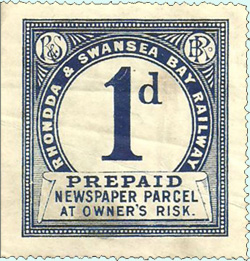 Although the Post Office had a monopoly on Letter delivery, it had no monopoly on parcel delivery. Indeed, the Post office did not even start its own parcel delivery service until about 1883. So, the railway companies of the day, seeing an opportunity to raise money, moved into the Newspaper Delivery business. Railway companies printed and used their own stamps for use on newspaper deliveries in much the same way as Post Office stamps were used on letters.
Although the Post Office had a monopoly on Letter delivery, it had no monopoly on parcel delivery. Indeed, the Post office did not even start its own parcel delivery service until about 1883. So, the railway companies of the day, seeing an opportunity to raise money, moved into the Newspaper Delivery business. Railway companies printed and used their own stamps for use on newspaper deliveries in much the same way as Post Office stamps were used on letters.
This development in 1855 was led by five railway companies: the North Eastern Railway, the Great Northern Railway, the Lancashire & Yorkshire Railway, the Manchester Sheffield & Lincolnshire Railway, and the East Lancashire Railway (which collectively became known as the Midlands Confederacy, more recently referred to by some as the Northern Mafia). Many other railway companies soon followed suite with their own newspaper parcel delivery services.
At the height of the railway boom in the late 1800s, more than a hundred railway companies in Britain and Ireland printed and used their own stamps! Most railway companies printed a serial number (usually called a Control Number) on each stamp as a precaution against fraud and the unlawful re-use of stamps. A few companies (such as the Great Northern Railway and the Rhonda & Swansea Bay Railway) did not initially think that control numbers were necessary. The designs of these railway newspaper stamps were many and varied, which makes them attractive to collectors.
A display called About the RPG was presented at the 2017 RPG Annual Convention in Shildon. This display shows a lot of examples of the Newspaper Stamps issued by the various railways.
CLICK HERE to view page 6 of that display: Railway Newspaper Stamps (opens in new window)
1872 – Railway General Parcel Stamps
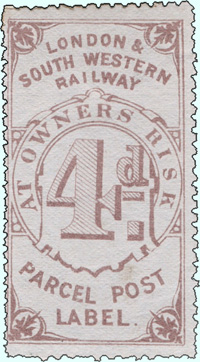 Newspaper delivery services were mainly aimed at the newspaper manufacturers, and it wasn’t until the 1870s that railway parcel services were made available to the general public. The London & South Western Railway, along with several other railways, had introduced Newspaper Parcel stamps in 1855, and may have been the first company to introduce a parcel delivery service (c. 1872).
Newspaper delivery services were mainly aimed at the newspaper manufacturers, and it wasn’t until the 1870s that railway parcel services were made available to the general public. The London & South Western Railway, along with several other railways, had introduced Newspaper Parcel stamps in 1855, and may have been the first company to introduce a parcel delivery service (c. 1872).
By the end of the 1870s most railway companies had a parcel service. As with the railway newspaper stamps, the designs of these parcel stamps varied greatly, again making them very attractive and collectable.
It is interesting to note that passenger luggage which was sent in advance of the passenger’s journey was sent under the Parcel Stamp system (rather than being part of the Luggage System), resulting in more railway stamp varieties.
A display called About the RPG was presented at the 2017 RPG Annual Convention in Shildon. This display shows a lot of examples of the Parcel Stamps issued by the various railways.
CLICK HERE to view page 7 of that display: Railway Parcel Stamps (opens in a new window)
1901/1906 – The Early Railway Stamp Catalogues
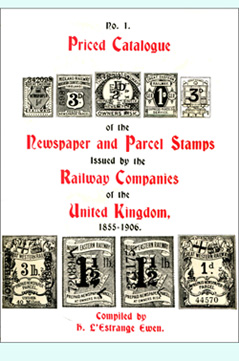 In 1901 that Herbert L’Estrange Ewen published his 448 page History Railway Letter Stamps, followed in 1906 by his Priced Catalogue of the Newspaper and Parcel Stamps Issued by the Railway Companies of the United Kingdom (1855-1906). These two publications changed railway stamp collecting from being a casual pastime to become a detailed study. Ewen’s Newspaper & Parcel Stamp catalogue is fully illustrated and, for its time, the quality of illustrations in the catalogue is remarkable. This catalogue is considered even today to be the ‘father’ of all railway parcel stamp catalogues.
In 1901 that Herbert L’Estrange Ewen published his 448 page History Railway Letter Stamps, followed in 1906 by his Priced Catalogue of the Newspaper and Parcel Stamps Issued by the Railway Companies of the United Kingdom (1855-1906). These two publications changed railway stamp collecting from being a casual pastime to become a detailed study. Ewen’s Newspaper & Parcel Stamp catalogue is fully illustrated and, for its time, the quality of illustrations in the catalogue is remarkable. This catalogue is considered even today to be the ‘father’ of all railway parcel stamp catalogues.
1922 – Creation of the Irish Free State
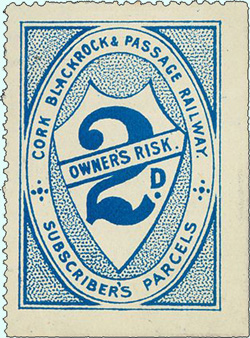 Prior to 1922, Britain and Ireland was a single kingdom. Businesses in Ireland were subject to exactly the same legal constraints as businesses in the rest of Britain. From the start, Irish and British railway company stamps were always grouped together by collectors. With the creation of the Irish Free State (subsequently to become Eire or Ireland), the Irish railways passed outside the authority of the British government. Nevertheless, Irish and British railways have a common ancestry, and most collectors have continued to group Irish railway stamps together with British railway stamps. We will therefore follow that practice here also.
Prior to 1922, Britain and Ireland was a single kingdom. Businesses in Ireland were subject to exactly the same legal constraints as businesses in the rest of Britain. From the start, Irish and British railway company stamps were always grouped together by collectors. With the creation of the Irish Free State (subsequently to become Eire or Ireland), the Irish railways passed outside the authority of the British government. Nevertheless, Irish and British railways have a common ancestry, and most collectors have continued to group Irish railway stamps together with British railway stamps. We will therefore follow that practice here also.
1923 – The Grouping of the Railways
During the 1914-18 war the British Government had taken control of the railways, a state which continued until 1921 when they were returned to private ownership (which didn’t last very long!). Following years of poor maintenance and a lack of investment, plus the hardships brought about by the 1914-18 war, the railways had fallen into a sad state of disrepair by the 1920s. Furthermore, with over a hundred private companies (most competing with parallel lines between many towns) the government of the day felt compelled to step in and rationalise the structure of the railways.
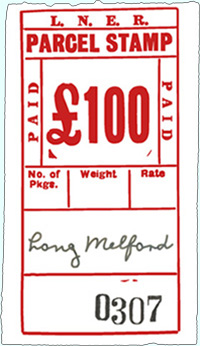 The Government wanted to stem the losses that had been made by many of the country’s 120 or so private railway companies, and passed the Railways Act 1921 (also known as the Grouping Act) which came into effect in 1923. It fell short of nationalisation, but forced most of the railway companies to amalgamate into four major companies, the London & North Eastern Railway (LNER), the Southern Railway (SR), the London Midland & Scottish Railway (LMSR) and the Great Western Railway (GWR). For obvious reasons, these four new companies were (and still are) referred to as the Big Four. This, of course, produced a whole new and varied railway stamp collecting era.
The Government wanted to stem the losses that had been made by many of the country’s 120 or so private railway companies, and passed the Railways Act 1921 (also known as the Grouping Act) which came into effect in 1923. It fell short of nationalisation, but forced most of the railway companies to amalgamate into four major companies, the London & North Eastern Railway (LNER), the Southern Railway (SR), the London Midland & Scottish Railway (LMSR) and the Great Western Railway (GWR). For obvious reasons, these four new companies were (and still are) referred to as the Big Four. This, of course, produced a whole new and varied railway stamp collecting era.
(Of course, railway stamps of the new Irish Free State were not subject to this reorganisation.)
The curious £100 stamp illustrated above is believed to have been used used on invoices sent to the Ministry of Defence for the carriage of large ‘parcels’ such as a train load of tanks, or moving a whole regiment of soldiers from point A to point B etc!
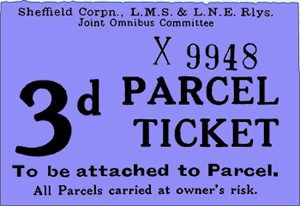 Not all companies were rolled up in the Grouping exercise – a number of Joint Railways still existed outside of the Big Four. Joint Railways were nominally independent, though their Boards of Directors were nominated by the parent companies (viz. two or more of the Big Four). This lead to yet another fascinating area of railway stamp collecting, as many of the Joint Companies issued their own railway stamps which were often based on designs created by the parent companies. Indeed, there were even joint companies where one or more of the Big Four railways were were partnered by non-railway bodies (see above).
Not all companies were rolled up in the Grouping exercise – a number of Joint Railways still existed outside of the Big Four. Joint Railways were nominally independent, though their Boards of Directors were nominated by the parent companies (viz. two or more of the Big Four). This lead to yet another fascinating area of railway stamp collecting, as many of the Joint Companies issued their own railway stamps which were often based on designs created by the parent companies. Indeed, there were even joint companies where one or more of the Big Four railways were were partnered by non-railway bodies (see above).
There was also considerable diversity in the stamps of railways based in and around London. There were even a few small independent companies (such as the North Sunderland Railway) which escaped the Grouping exercise altogether, though stamps and related material from such companies are very thin on the ground … or even non-existent.
1948 – Nationalisation of the British Railways
Following more years of neglect and lack of investment, plus the privations brought about by the 1939-45 war, the railways of Britain were in a pretty desperate state by the end of the 1940s. The government of the day once again felt compelled to step in, and in 1948 it took full control of all modes of transport. The new over-arching publicly owned company was the British Transport Commission (BTC), which managed transport via five Divisions or Executives:
Docks & Waterways, Hotels, Railways, London Transport, and Road Transport.
(The government compensated former owners by giving them stocks in the BTC which provided a guaranteed 3% annual return for the former owners, chargeable to the BTC. This guaranteed 3% return was to become a substantial and eventually fatal drain on the BTC’s capital in years to come.)
The Railways Executive was sub-divided into regions: Eastern Region, North Eastern Region (later to be merged with Eastern), London Midland Region (often referred to as just Midland Region), Western Region, Southern Region, and Scottish Region (later to be renamed ScotRail). Yet again, this produced another whole era of railway stamps. Initially, each region produced sets of stamps (sometimes now referred to as ‘clones’) based on the stamp designs of one or more of its ancestor companies, but eventually British Rail got round to issuing ‘all region’ sets of stamps.
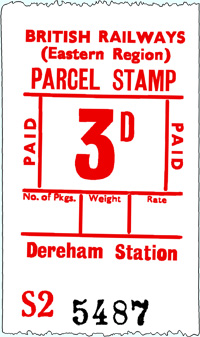
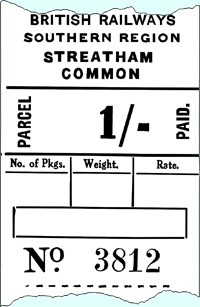
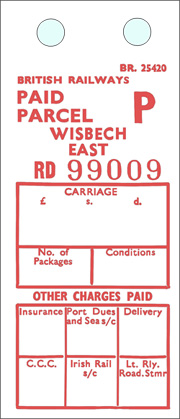
In 1955 the Executive level of control was abolished and the railway Executives were put under the direct management of the BTC. In 1963 the BTC itself was abolished, and the railways were put under the care of a newly created British Railways Board (trading under the name of British Railways). Yet again, these changes had ramifications for the railway stamps being produced.
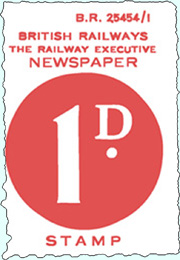
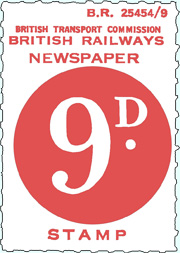
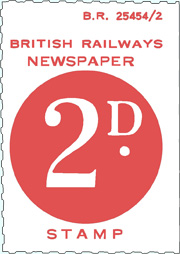
All good things come to an end. BR’s own letter services and parcel services (after going through a number of so-called ‘initiatives’) eventually became far too unprofitable and were abandoned piecemeal during the 1980s and 1990s.
But Railway Stamp Collecting goes on FOREVER!